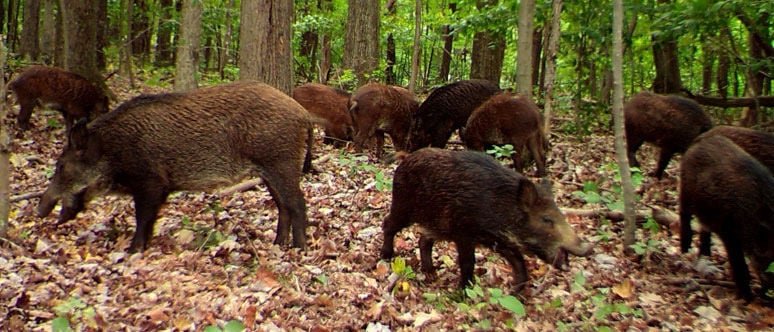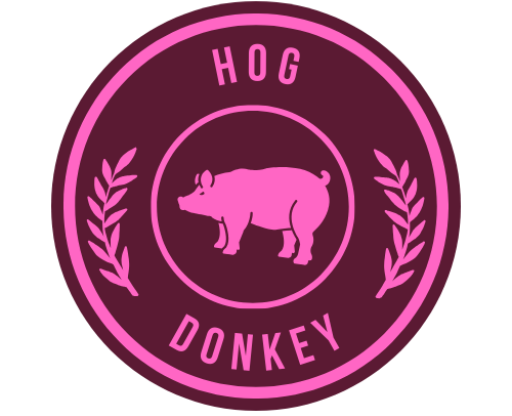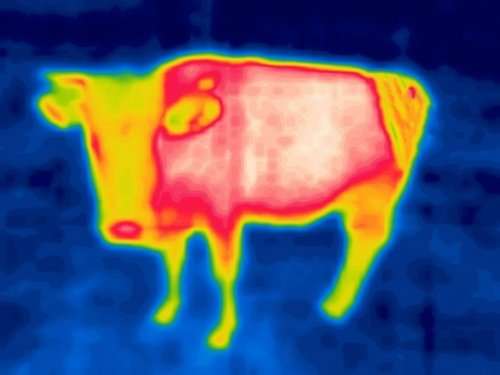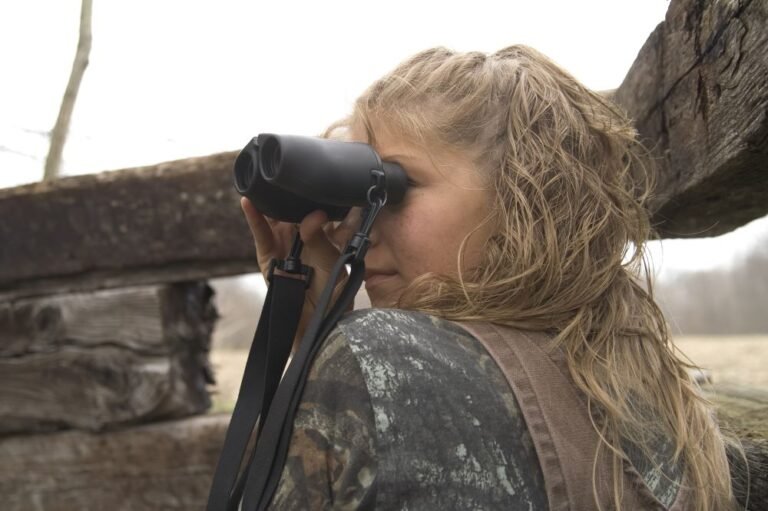Virginia Hog Hunting: Unleashing the Wild in the Old Dominion!
Ah, the thrill of the hunt! Hog hunting has captured outdoor enthusiasts’ hearts and trigger fingers for years, and Virginia is no exception. As one of America’s favorite pastimes, hog hunting combines the adrenaline rush of stalking an elusive game with the satisfaction of bringing home some delicious pork chops. Let’s dive into Virginia hog hunting.
It’s a sport that requires skill, patience, and a deep connection to nature. So grab your gear and dive into the wild world of Virginia hog hunting.
Virginia’s unique landscape and diverse hog population
When it comes to hog hunting locations, few places can rival the vast beauty that Virginia has to offer. From dense forests to sprawling fields and everything in between, this state presents hunters with diverse landscapes to explore. Whether you prefer sneaking through thickets or setting up in open clearings, Virginia has it all.
But what truly sets this state apart is its remarkable population of feral hogs. These elusive creatures have made themselves home in various regions across Virginia, thanks to historical introductions and their impressive ability to adapt.
Their numbers have been steadily growing, making them a challenging yet exciting target for hunters. The pigs in these parts come in all shapes and sizes – from small shoats weighing around 50 pounds to massive boars tipping the scales at over 300 pounds!
And you won’t believe the diversity in colors, too; you’ll find hogs ranging from black or brownish-black to sandy or reddish-brown coats. So whether you’re pursuing trophy tusks or simply looking for an unforgettable adventure, Virginia offers abundant opportunities for every kind of hunter.
With our introduction complete and our sights set on thrilling hunts ahead, it’s time to delve further into understanding feral hogs in Virginia. So, strap on your boots, load your hunting gear, and venture into the fascinating world of hog hunting in the Old Dominion.
Understanding Feral Hogs in Virginia
History and Introduction of Feral Hogs in the State
Virginia’s feral hog population results from historical introductions by European settlers. It is believed that hogs were initially brought to the area for agricultural purposes, but some escaped and established feral populations.
Over time, these feral hogs adapted to their new environment and thrived in Virginia’s diverse landscapes. Today, the state faces the challenge of managing these populations to minimize their negative impact on native wildlife and habitats.
Characteristics and Behavior of Feral Hogs in Virginia
Feral hogs in Virginia exhibit a range of physical characteristics. They can vary in size, with adult males (boars) weighing up to 300 pounds or more, while females (sows) typically weigh slightly less.
These hogs possess tough hides with bristly hair, which helps protect them from external elements. They are known for their long snouts for rooting the ground in search of food and their sharp tusks for defense.
In terms of behavior, feral hogs are highly adaptable and intelligent creatures. They have a keen sense of smell and excellent hearing abilities, making them challenging targets for hunters.
When available, feral hogs are opportunistic omnivores that feed on vegetation such as acorns, roots, grasses, crops, small mammals, and reptiles. Their rooting behavior can cause significant damage to agricultural fields and natural habitats if left unchecked.
Understanding the history and characteristics of feral hogs in Virginia is essential for hunters interested in hog hunting in the state. By understanding their origins and behaviors, hunters can better strategize their approach when pursuing these elusive animals across various Virginia hog hunting locations.
Regulations and Licensing for Hog Hunting in Virginia
Overview of hunting seasons and bag limits specific to hogs
Regarding hog hunting in Virginia, hunters must know the state’s specific regulations and bag limits. The hunting seasons for feral hogs typically coincide with other game species, such as deer or turkey.
Hog hunting is permitted year-round in most regions, allowing enthusiasts to indulge in their favorite pastime anytime. However, it’s crucial to familiarize oneself with the regional variations and consult the Virginia Department of Wildlife Resources (VDWR) website or local authorities to ensure compliance with current rules and regulations.
The bag limits for hogs can also vary depending on the region and time of year. Some areas may have no bag limits, allowing hunters to take multiple hogs during a single outing. However, certain regions may restrict the number of hogs harvested per day or season. Hunters need to stay updated on these regulations as they are subject to change periodically.
Licensing requirements for hog hunting in the state
To participate in hog hunting adventures across Virginia’s sprawling landscapes, prospective hunters must possess a valid license issued by the VDWR. Fortunately, obtaining a license is relatively straightforward but necessary nonetheless. Hunters have several options when it comes to licensing: they can choose between an annual resident or non-resident license based on their residency status.
For residents of Virginia, an annual resident hunting license covers both small game and big game species like feral hogs throughout the year. Non-residents have similar options but need a non-resident license instead; this allows them access to pursue these elusive creatures within state boundaries.
It’s worth noting that additional licenses may be required depending on individual circumstances or if participating in guided hunts organized by private outfitters or landowners. Double-check the licensing requirements to avoid legal issues and maximize your Virginia hog hunting experience.
Best Locations for Hog Hunting in Virginia
Prime Regions with High Hog Populations: Shenandoah Valley and Tidewater Area
When it comes to hog hunting in Virginia, there are a few regions that stand out for their abundant hog populations. One of these prime locations is the picturesque Shenandoah Valley, nestled between the Blue Ridge Mountains and the Allegheny Mountains. This region offers a diverse landscape with rolling hills, dense forests, and agricultural fields that attract hogs looking for food and shelter.
The plentiful water sources in the valley also contribute to the thriving hog population. Another notable area for Virginia hog hunting is the Tidewater region.
Located along the coast of eastern Virginia, this area boasts vast marshes, swamps, and river bottoms that provide ideal habitats for feral hogs. The mix of wetlands and farmland creates an enticing environment where hogs can find abundant food sources like crops and roots.
Public Lands, Private Ranches, and Guided Hunt Options
You have various options if you’re interested in embarking on a memorable hog-hunting adventure in Virginia. Public lands such as national wildlife refuges and state forests offer ample opportunities for hunters to pursue feral hogs. Places like George Washington National Forest or Cavalier Wildlife Management Area present vast expanses of wilderness where hogs roam freely.
Private ranches are a great option for those seeking more exclusive experiences or access to larger populations of hogs. Many ranches throughout Virginia cater specifically to hog hunters and provide guided hunts with experienced professionals who know the best areas to target these elusive creatures.
Guided hunts can be an excellent choice for novice hunters seeking guidance or seasoned veterans looking to explore unfamiliar territories without worrying about logistics. These experienced guides have intimate knowledge of local terrain and effective strategies to increase your chances of a successful hunt.
Overall, whether you choose to hunt on public lands, book a trip to a private ranch, or opt for a guided hunt, Virginia offers ample opportunities for hog-hunting enthusiasts. The key is to select the option that aligns with your preferences and desired experience level.
Popular Methods and Equipment Used in Hog Hunting
Common Hunting Techniques for Virginia Hog Hunting
Regarding hog hunting in Virginia, hunters employ various techniques to increase their chances of success. One popular method is the spot-and-stalk technique, where hunters locate hogs from a distance and stealthily approach on foot for a close-range shot. Another common technique involves baiting, where hunters set up feeders or bait piles to attract hogs, creating an opportunity for an ambush.
Additionally, many hunters rely on trained dogs to track and corner hogs, assisting the overall hunting process. These methods require patience, skill, and a deep understanding of hog behavior.
Recommended Firearms, Bows, Knives, and Gear for Hog Hunting
When choosing the right gear for Virginia hog hunting, several options depend on personal preference and hunting style. For firearms enthusiasts, popular choices include rifles chambered in larger calibers such as .30-06 Springfield or .308 Winchester.
These offer the necessary power and range needed to take down hogs effectively. For those who prefer archery hunting, compound bows with a draw weight of 50-70 pounds are recommended, along with razor-sharp broadheads that can penetrate the tough hide of hogs.
Additionally, having a reliable knife is essential for field dressing and butchering game after a successful hunt. It’s also crucial to bring appropriate clothing, like camouflage gear, suitable for the terrain to blend into the environment effectively.
, Virginia hog hunting offers ample opportunities to utilize techniques such as spot-and-stalk or baiting while employing recommended gear like firearms or bows with corresponding ammunition or arrows that have sufficient power to neutralize these robust animals efficiently. By understanding different approaches to hog hunting methods and choosing appropriate equipment based on one’s preferences, hunters can increase their chances of a successful and memorable experience in Virginia’s bountiful hog hunting locations.
Safety Considerations When Hog Hunting in Virginia
Importance of Proper Firearm Handling and Hunter Education
Regarding hog hunting in Virginia, safety should always be the top priority. One crucial aspect of safety is proper firearm handling. Hunters must ensure they are familiar with their firearms, including how to load and unload them safely and properly aim and shoot.
It’s essential to follow all gun safety rules and guidelines provided by the Virginia Department of Wildlife Resources. Additionally, obtaining hunter education is highly recommended before venturing into the field.
Hunter education courses cover vital topics such as firearm safety, wildlife conservation, ethics, hunting regulations, and first aid knowledge. Hunters can minimize risks and enjoy a safer hunting experience by having a solid foundation in these areas.
Awareness of Potential Hazards like Venomous Snakes or Wild Boar Aggression
Virginia hog hunting locations are home to feral hogs and other creatures that can pose potential hazards. One such hazard is venomous snakes.
The state harbors several species of venomous snakes, like copperheads or timber rattlesnakes, that hunters may encounter while traversing through wooded areas or marshlands. It’s crucial for hunters to wear appropriate protective gear like snake-proof boots and remain vigilant while moving through such habitats.
Moreover, wild boar aggression is another factor hunters must be aware of during hog hunts in Virginia. While most feral hogs avoid human interaction if possible, wounded or cornered boars can display aggressive behavior as a defensive response.
It’s recommended that hunters stay calm, maintain a safe distance from an aggressive boar if encountered, and avoid provoking or cornering the animal further. Knowledge of these potential hazards will allow hog hunters in Virginia to prepare accordingly and take necessary precautions for their safety while enjoying this thrilling outdoor pursuit.

Hog Meat: Harvesting & Utilization
Hog Processing Techniques: Field Dressing & Butchering Tips
Once you’ve successfully hunted a hog during your adventurous escapades of hog hunting in Virginia, it’s time to turn that wild game into delicious meat. The first step is field dressing, which involves removing the internal organs and preparing the hog for transportation. Start by incision from the anus to the base of the neck, careful not to puncture any organs.
Carefully remove the entrails and save what you intend to use, like the heart or liver. If possible, hang the hog upside down for a while to let excess blood drain out. After field dressing, it’s time for butchering. This process involves dividing the meat into manageable portions based on cuts and desired uses.
A sharp knife is essential here—make precise cuts along major muscle groups like shoulders, hams, and loins. Depending on your preferences, you can further divide them into roasts, steaks, or ground meat.
Popular Recipes & Cooking Methods
Now that you have your freshly butchered hog meat from your successful ventures in Virginia hog hunting locations, let’s explore some mouthwatering recipes and cooking methods to make those meals unforgettable. When it comes to cooking wild boar meat, low and slow is often the way to go.
Slow-roasting a wild boar shoulder with herbs and spices can result in succulent pulled pork that falls apart effortlessly with each bite. Marinating wild boar chops overnight and grilling them over medium heat will give you a flavorful yet tender dish.
If you’re feeling adventurous with your culinary skills after a fruitful day of Virginia hog hunting locations exploration, try making traditional sausages or cured bacon from your harvested hog meat. With proper seasoning blends and patience, you can create artisanal-style products that impress even the most discerning taste buds.
Remember, hog meat is versatile and can be used in various recipes. Whether it’s a hearty stew, smoky barbecue ribs, or a gourmet wild boar ragu for pasta, let your creativity take the lead and savor the rewards of your hog-hunting endeavors.
Conservation Efforts & Impact on Ecosystems
Exploring feral hogs’ negative effects on native wildlife & habitats
Feral hogs, known for their high reproduction rates and destructive foraging habits, pose a significant threat to native wildlife and ecosystems in Virginia. These voracious creatures ravage vegetation, destroy crops, and obliterate ground-nesting bird nests. They trample fragile marshlands, disrupt waterways with wallowing behavior, and contribute to soil erosion.
Furthermore, their rooting behavior can damage archaeological sites of historical significance. The negative impact of feral hogs on the delicate balance of Virginia’s ecosystems cannot be overlooked.
We are highlighting ongoing initiatives by authorities to control
Authorities in Virginia are taking proactive measures to control the feral hog population and mitigate its harmful effects. Collaborative efforts have been established between state agencies, private landowners, and hunting organizations to combat this invasive species.
Strategies include trapping and removal programs, aerial monitoring to identify hog concentrations, controlled hunting seasons with bag limits, and public awareness campaigns emphasizing responsible hunting practices. These initiatives aim not only to protect native wildlife but also to preserve the delicate ecological balance that makes Virginia such a diverse natural treasure.
Conclusion
While feral hogs may challenge Virginia’s wildlife and habitats, hope is on the horizon. Progress is being made in controlling these invasive creatures through ongoing conservation efforts led by dedicated authorities and active participation from hunters across the state.
Together, we can restore balance to our ecosystems while still enjoying the thrill of hog hunting in Virginia’s picturesque landscapes. By embracing responsible hunting practices and supporting initiatives aimed at preservation, we can all positively impact our environment and future generations of hunters.






